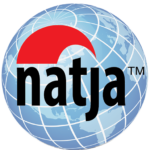Rob is a travel photographer and has written for bilingual Chinese-English publications and websites in Hong Kong, Macau, and Mainland China. He has covered folkloric celebrations such as Carnival and emerging travel destinations in Eastern Europe, the Balkans, and Central and South America. Rob also engages in sports photojournalism involving Masters Athletics. Before becoming a photographer and writer, Rob was a partner in the management consulting division of a major accounting firm.
1. What got you into travel writing?
I have been a traveler and a photographer all my adult life. When I had an opportunity to retire from my corporate job at a relatively young age, I decided to reinvent myself as a travel journalist.
I looked for publications that met two requirements (since I was not becoming a travel journalist to make a lot of money): (1) the publications had to reproduce my photographs well and (2) they had to accept me as both a photographer and a writer.
At that time (around the year 2000), US publications had a bleached-out look in their photographic reproduction. I was looking for museum-quality photographic reproduction. Also at that time, most US publications did not believe that a single person could function as both a writer and a photographer. Writing and photography were divided into two editorial departments at most magazines. Fortunately, I was able to find what I needed in magazines published in Hong Kong. I also had a media friend in Hong Kong who served as my agent and translator. Since the year 2000, I have published over 400 features in Hong Kong magazines and newspapers using both my photography and writing.
2. What’s the most challenging part of being a travel journalist for you?
As my audience in Hong Kong and Mainland China becomes more sophisticated, it is challenging for me to find destinations with which my audience is not already familiar. When I first began publishing in Hong Kong, I could produce articles about almost any destination since the Chinese were relatively travel-naive at that time.
3. What is one thing [equipment or personal item] you can’t go without on the road?
My Nikon camera equipment. On 9/11, I was grounded in Halifax, Nova Scotia, on a trip back from Barcelona when the air space over the US was closed. The only thing I had with me for a week was my camera bag and that was fine with me.
4. What’s your most unusual and/or memorable travel experience?
Meeting Mother Teresa in Calcutta by accident and spending time with her at the Mother House. The encounter was the subject of my first published travel article.
5. How did you learn about NATJA and why did you join?
In 2006, I entered the annual NATJA Awards before I became a member, and quite to my surprise, I won first prize in the Architectural Photography category. That prompted me to join the organization. Subsequent to that prize, I have won more than a dozen photography awards over the years in NATJA competitions. After I joined the organization, I have made a point of attending almost every annual conference and have found invaluable the lessons I have learned and the connections I have made at the conferences.
6. What is the best piece of advice you could give to a rookie travel journalist?
The best piece of advice I could give a rookie travel journalist is to respect other cultures as you would have others respect our culture. Do not assume that the rest of the world exists for your amusement. It exists for your education.

